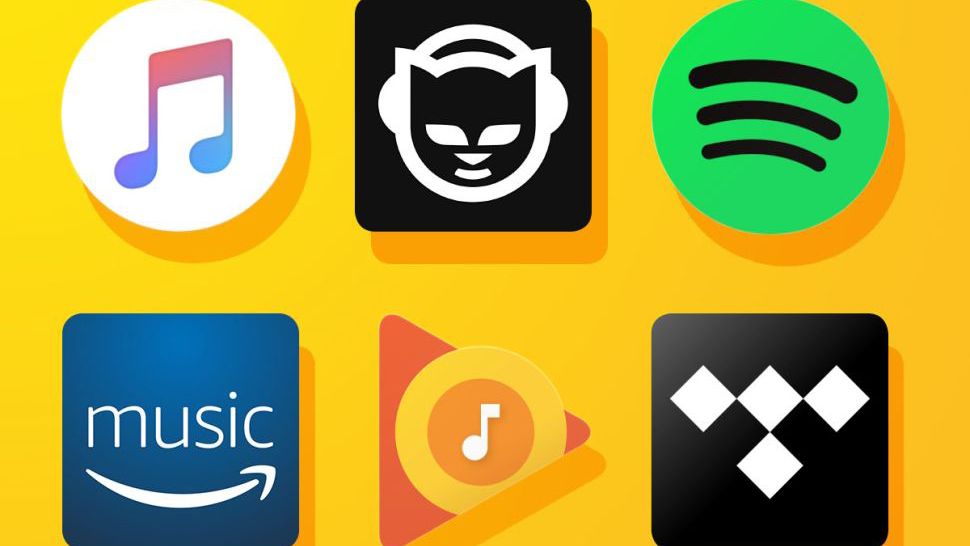
Now that Spotify has joined the fray, it's fair to say that hi-res music streaming is well and truly mainstream. And a good thing too – a monthly fee is more than worth it if it means higher-quality streams and no adverts.
But which is the best music streaming service for hi-res? That's what we're here to decide. Because if a service is charging you money – and all those streaming in high-resolution audio quality do – you want to make sure you're getting maximum bang for your buck.
Qobuz was the first player in the hi-res streaming game (except in Australia, where it only launched in 2021) and is still kicking about with an excellent-sounding offering that has significantly reduced in price in recent years to remain competitive. As well as a streaming-only tier, it offers a unique subscription that also includes a 60 per cent discount on hi-res downloads from its online store.
Then there's Tidal, which became the first proper hi-res streaming rival to Qobuz and helped carve out an ecosystem of MQA-supporting products through its decision to use that audio technology to power its hi-res 'Tidal Master' streams. Currently our favourite streaming service for hi-fi fans, Tidal has recently replaced the licensed MQA format with the open-source FLAC, and simplified and cheapened its offering (hi-res, CD-quality and Dolby Atmos Music) to compete with Apple and Amazon.
Which brings us to hi-res streaming's biggest game-changing moment yet. In 2021, Apple announced that its Music streaming service would offer CD-quality, hi-res and spatial audio streams to subscribers... for no extra cost. That would've undoubtedly been a big blow to Tidal and Qobuz, not to mention Amazon Music, which by that point had also launched a hi-res tier. Amazon's immediate response? To bundle its hi-res streams into its standard subscription as well. Tidal and Qobuz were then forced to follow suit in lowering their prices too.
Spotify has been almost comically late to the party. It finally launched its Lossless quality eight years after it was first rumoured (and four years after Spotify had promised). But there was some good news – it's included in the Premium tier, so you don't have to pay any extra.
Spotify Lossless' quality might be a lower bitrate than most of its rivals, but it is higher than Deezer, which is still stuck on CD quality.
Wondering which service deserves your hard-earned? We've compared them all below, including factors like hardware support, user experience, features, and of course sound quality.
Get ready: your music is about to sound a lot better.
Service |
Free tier |
Monthly hi-res price |
Supported formats |
Max streaming quality |
Spotify |
Ad-supported, 128kbp |
£12 / $12 / AU$16 |
OGG, FLAC, AAC |
24-bit/44.1kHz |
Apple Music |
- |
£11 / $11 / AU$13 |
AAC, ALAC |
24-bit/192kHz |
Tidal |
- |
£11 / $11 / AU$13 |
AAC, ALAC, FLAC |
24-bit/192kHz |
Deezer |
Ad-supported, 128kbps |
- |
FLAC |
16-bit/44.1kHz |
Amazon Music Unlimited |
- |
£11 / $11 / AU$13 (or £10 / $10 for Prime Members) |
FLAC |
24-bit/192kHz |
Qobuz |
- |
£13 / $13 / AU$20 |
AIFF, ALAC, FLAC, WAV, WMA Lossless |
24-bit/192kHz |
YouTube Music |
Ad-supported, 126kbps |
- |
AAC |
256kbps |
What is hi-res streaming and why should you want it?
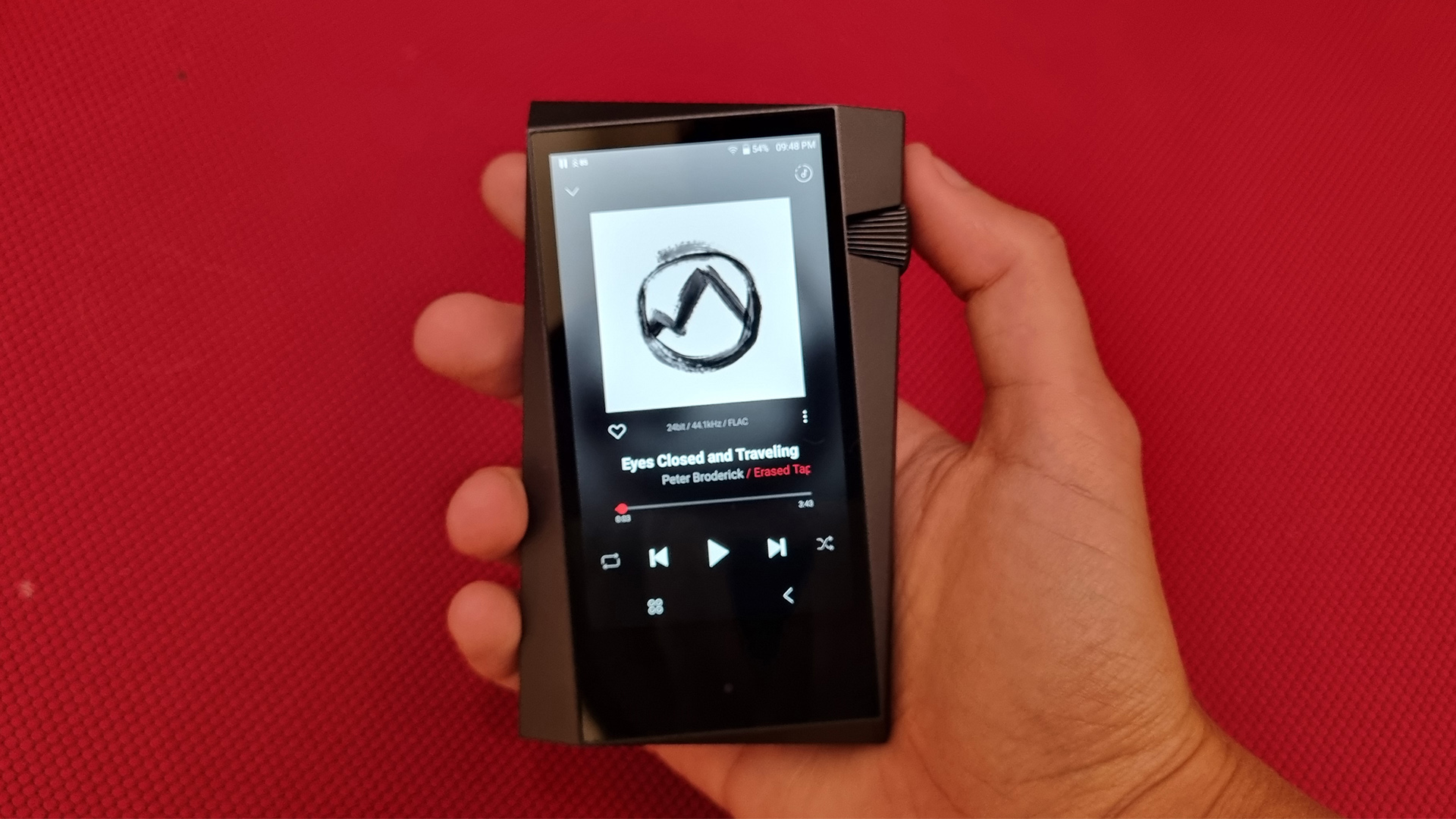
First things first, should you care about hi-res streaming? High-resolution (often shortened to 'hi-res') audio is a term used to describe music files that have a higher sampling frequency and/or bit depth than that of CD quality, which is specified at 16-bit/44.1kHz. So a hi-res file can be 24-bit/44.1kHz, where bit-depth is higher than CD quality but the sampling rate is the same, and vice versa.
So what do the numbers mean? It might help to think of an audio signal as a sound wave being plotted on a graph. Sampling rate – the second number – refers to the number of times per second that the wave is measured during the analogue-to-digital conversion process. The higher the sampling rate, the more times the audio signal has been sampled, and thus the more detail resolution you get.
The first number is bit-depth, which indicates the number of 'bits' of information present in each sample of the signal. Going from 16 to 24 bits results in a massive increase in dynamic range, which is the gap between the quietest and loudest sounds that can be captured. In numbers, it's a jump from 96dB to 144dB, which is huge.
Tracks on Spotify Premium that aren't available in Lossless use compressed file formats with relatively low bitrates, such as 320kbps Ogg Vorbis streams. This 'lossy' compression means that certain data is scrapped in the encoding process for the sake of convenience and smaller file sizes. Obviously, this affects the sound quality.
To illustrate why hi-res should sound better than, say, an MP3, we need simply to compare the relative bitrates (the amount of information being transferred measured in kilobits per second). The highest quality MP3 has a bitrate of 320kbps. A 24-bit/192kHz file takes that to 9216kbps. Music CDs are 1411kbps – remember, they're your starting marker for hi-res.
The hi-res 24-bit/96kHz or 24-bit/192kHz files should, therefore, more closely replicate the sound quality the musicians and engineers were working with in the studio. Provided your system is transparent enough, playing hi-res music can bring you more detail and texture, thus bringing you closer to what the artist wanted to say when they recorded their work. And isn't that what we want?
For more information, read our high-resolution audio explainer.
Hi-res vs 'lossless': what's the difference?
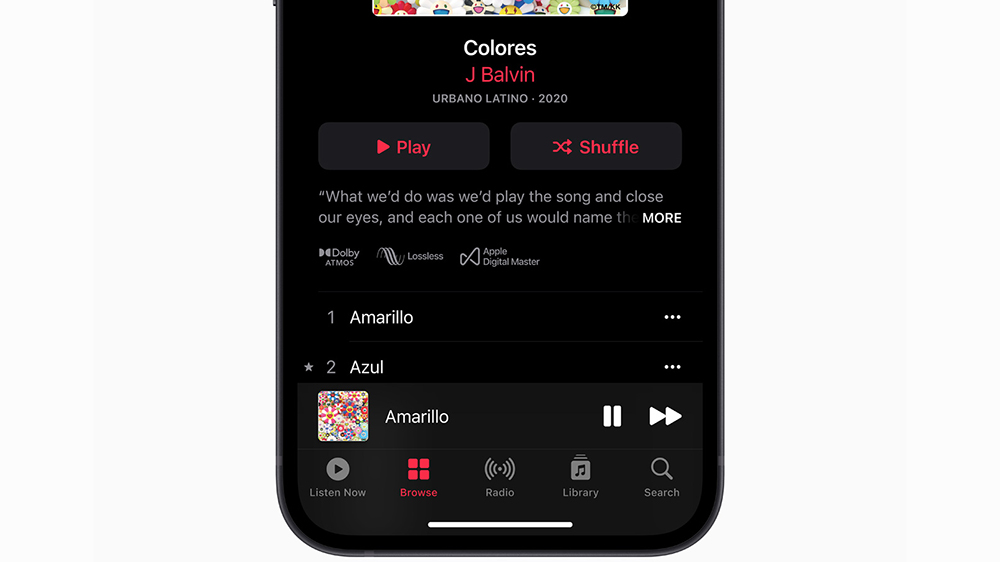
This is where some confusion creeps in. The terms 'lossless' and hi-res' might be used interchangeably, but they're not the same. Tracks that are lossless are not always hi-res, for example.
The services themselves aren't helping. Apple Music uses 'Lossless' and 'Hi-Res Lossless' labels while Amazon Music prefers the terms 'HD' and 'UHD'. Way to simplify things, guys!
But allow us to explain.
Hi-res audio is generally understood as music with a resolution higher than CD quality. But lossless audio has no set specification in terms of bitrate. The term covers only how much data has been thrown out during the encoding process and, as a result, how much quality or “loss” you will experience when you play it.
If no compression algorithm (or codec) has been used to compress the audio within your particular file, two things happen: lossless (though not necessarily hi-res) sound quality and, due to the large file size of audio that hasn't been compressed, a storage warning on your device!
The term lossless audio is commonly used to describe CD-quality music, which is specified at 16-bit/44.1kHz. But we use it to refer to higher-than-CD quality – so Spotify's Lossless service (which offers up to 24-bit/44.1kHz) is hi-res.
- MP3, AAC, WAV, FLAC: all the audio file formats explained
- What are the best Bluetooth codecs? aptX, AAC, LDAC and more compared
Which streaming services offer hi-res music?
Short answer: Tidal, Qobuz, Spotify, Amazon Music and Apple Music.
Here's an explainer on each service, the tech they use to deliver hi-res, what you'll need to play it, and, crucially, for whom each service will likely be best suited.
Tidal – for audiophiles
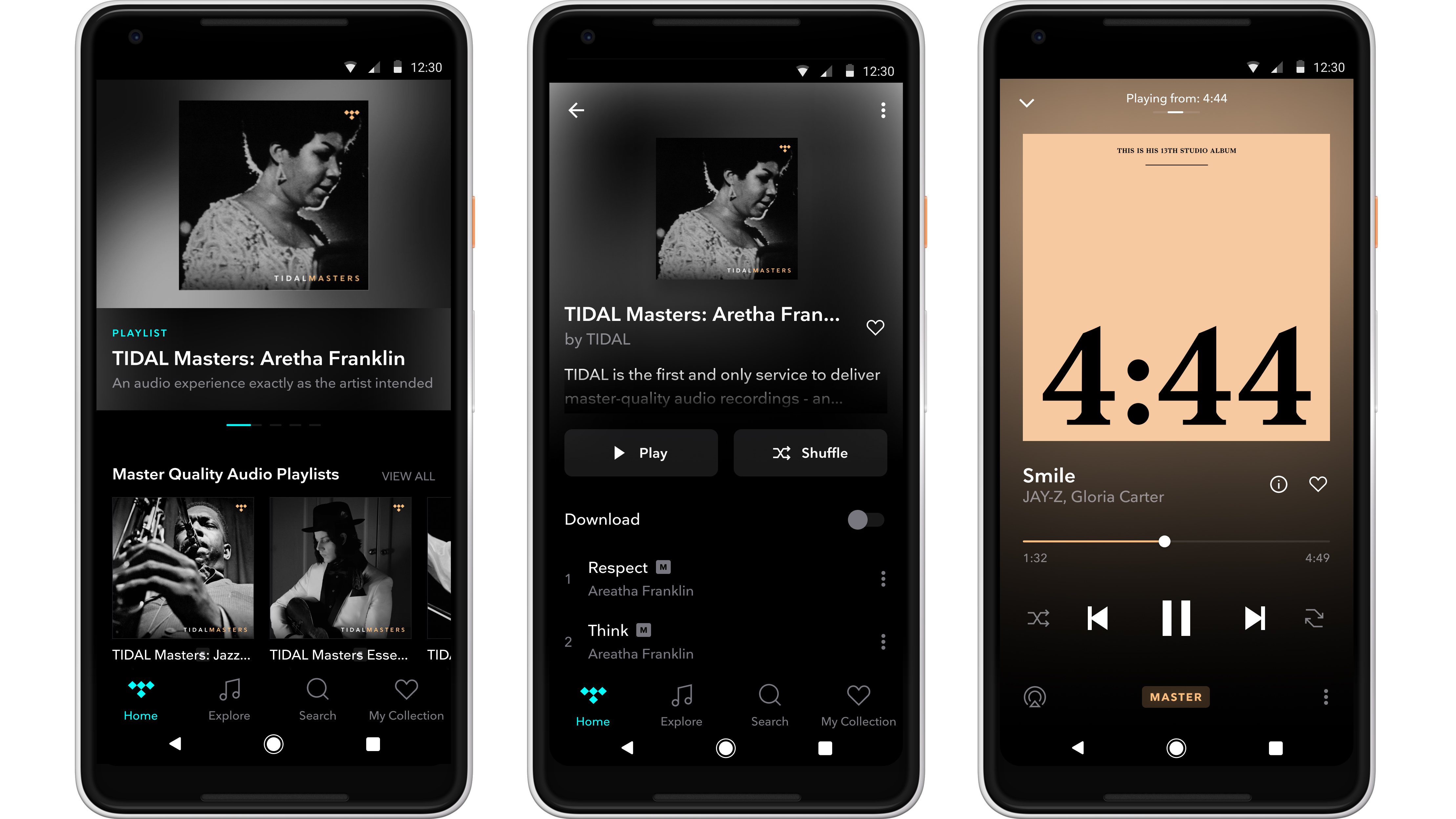
Tidal has been riding the hi-res wave since 2017 when it began offering hi-res audio streaming thanks to the adoption of MQA technology. It remains a solid hi-res proposition today, but plenty has changed in the past few years.
Firstly, MQA no longer powers Tidal's hi-res streams; FLAC does. That means its hi-res catalogue is no longer restricted to its mobile (iOS and Android) and desktop apps and MQA-supporting hi-fi equipment, as was the case for several years. As FLAC is an open-source format, any hi-res device can theoretically access the streams now.
The vast number of hi-res streams are typically 24-bit/96kHz, though 192kHz can also be found in the library. Dolby Atmos Music streams are also onboard for more immersive 'spatial' audio listening through headphones and, ideally, Atmos-compatible kit, from soundbars and TVs to AVRs and smart speakers. Tidal used to also play ball with Sony's conceptually similar 360 Reality Audio spatial format, but it ceased support for it in mid-2024.
Tidal Connect – a similar concept to Spotify Connect – also allows for easy hi-res streaming to compatible products from within the native Tidal app.
The excellent sound quality, intuitive interface and improving discovery and algorithm-driven playlist features make the Tidal app a popular one with audiophiles.
- Read our Tidal review
- Tidal tips: how to download music, play it offline, and more
Amazon Music Unlimited – value hi-res streams for Prime members
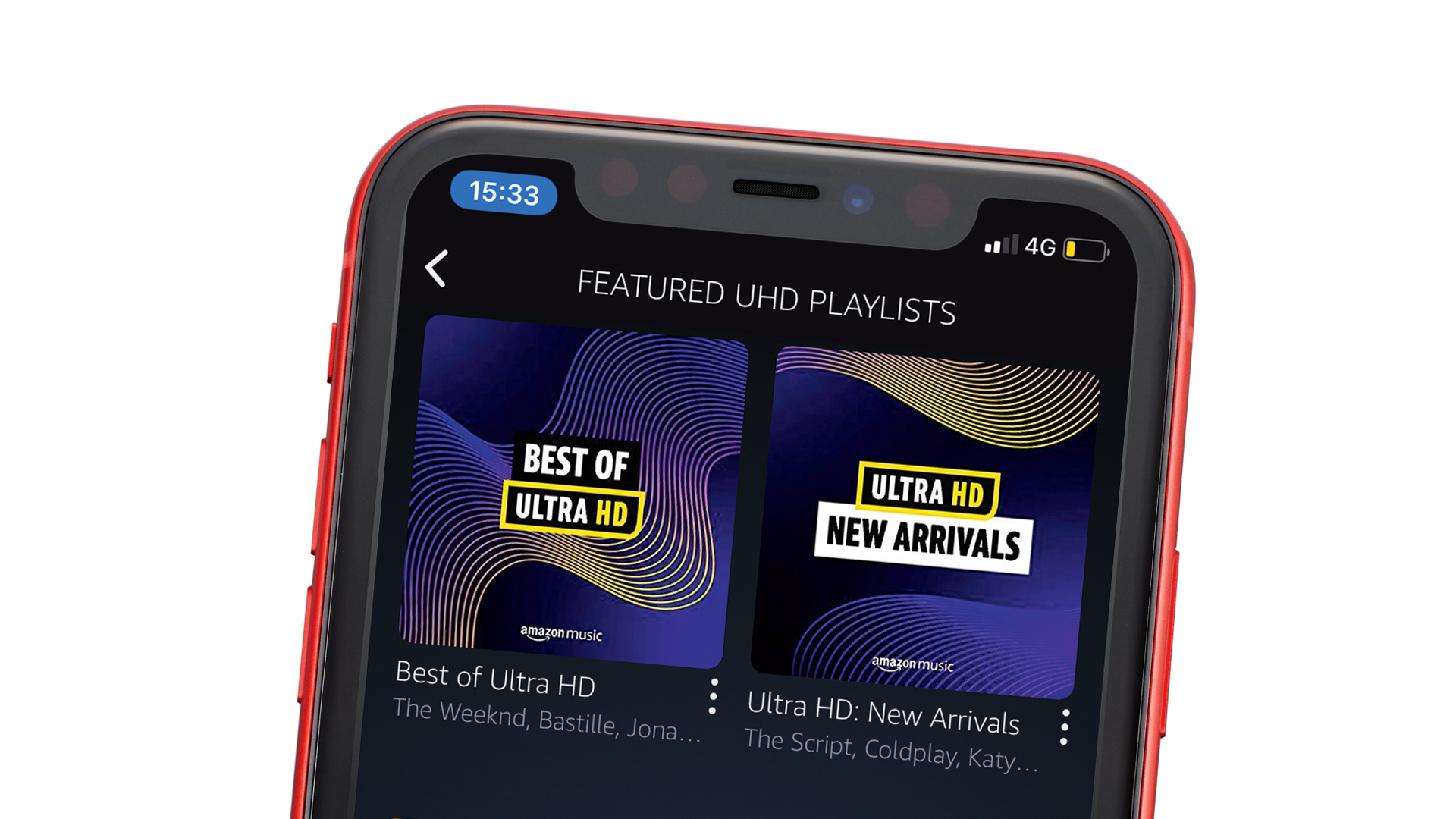
Whichever way you approach it, Amazon has gone super aggressive on pricing. In response to Apple Music's hi-res streaming announcement in 2021, Amazon made its hi-res Music HD tier (which was an additional £5 / $5 per month) free for Amazon Music Unlimited subscribers. Price-matching Apple Music, it is currently the joint-cheapest way to stream in hi-res – but Prime members get a discount on the subscription making it the most affordable hi-res option out there for them.
You can access Amazon Music Unlimited's 'HD' (16-bit CD quality) and 'UHD' (hi-res 24-bit) streams via three different avenues: the desktop app, the Android and iOS mobile apps, and compatible audio hardware with direct access to Amazon Music.
To Amazon’s credit, it pushes its seven-million-strong Ultra HD catalogue extremely hard on the service with dedicated playlists and clear labelling, e.g. Best of Ultra HD, Ultra HD: New Arrivals, Ultra HD Hip-Hop and Ultra HD Jazz. It doesn’t take long to find a steady stream of UHD music to listen to.
Subscribers can also access Amazon’s catalogue of 3D audio tracks, encoded in either Dolby Atmos or Sony 360 Reality Audio, through their headphones or Amazon Echo Studio speaker.
We don't find Amazon Music's interface or discovery features quite as compelling as those from Tidal and Apple Music, but otherwise it's a strong all-round and great-sounding offering, particularly for Amazon Prime subscribers.
- Read our Amazon Music Unlimited review
Spotify – for casual listening
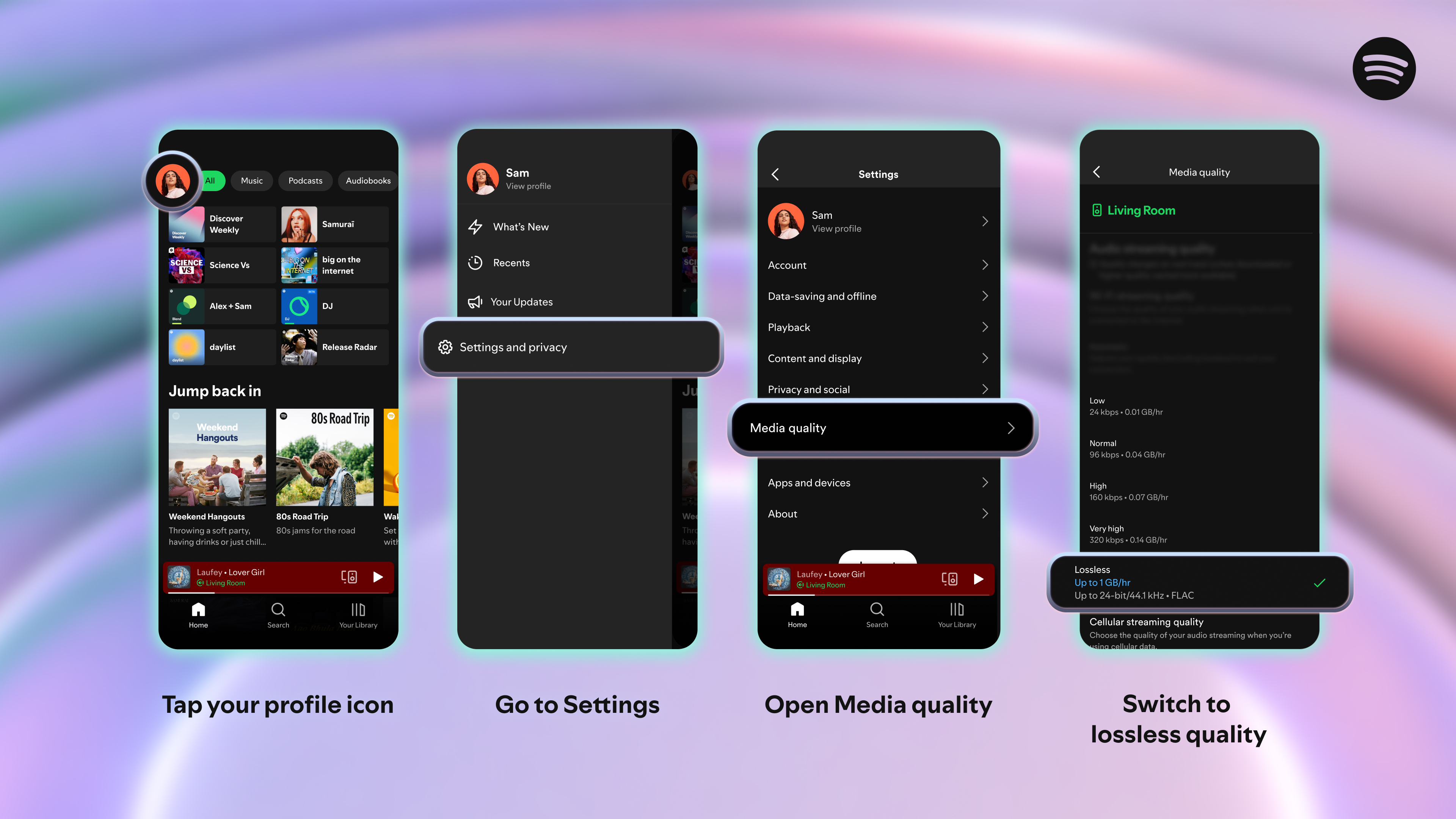
Better late than never. Spotify Lossless finally arrived in September 2025, eight years after it was first rumoured. But there was some good news – it doesn't cost any extra (it had been rumoured to cost around £5 / $5 more per month).
Though given the number of price increases Spotify users have had to endure in recent years, you could argue Lossless has been priced in for some time.
Lossless offers better-than-CD quality (up to 24-bit/44.1kHz) that's not as high as Tidal, Amazon, Qobuz or Apple, but is better than Deezer. Which is in keeping with Spotify's mainstream appeal.
It works with Spotify Connect, allowing you to play on compatible devices over wi-fi, bypassing your phone. Not only is this more convenient and allows for higher sound quality than over Bluetooth, it also brings Spotify Lossless to a very wide array of home hi-fi products from big name manufacturers including Sony, Bose, Samsung and Sennheiser. Just check that the kit is compatible with Spotify Connect before buying.
'Most' of Spotify's vast library of tracks is available in Lossless, and it supports staple Spotify features like DJ, Jam, AI Playlist, brand new Mix and daylist.
It is compelling, but in our updated Spotify review we found its sound quality isn't as good as Tidal's. Spotify is also a little more expensive. If you prize sound quality above all else, and have the kit to show for it, Tidal is the better bet, but Spotify Lossless will still be a welcome upgrade for most people.
- Spotify Lossless: price, release date, sound quality and more
- Want to get the most from Spotify Lossless? We recommend these 3 wired headphones for various budgets
- An excruciating timeline of our eight-year wait for Spotify Lossless
- Spotify Lossless still trails behind its hi-res streaming rivals – but that won’t matter for most people
Qobuz – for audiophiles and/or avid downloaders
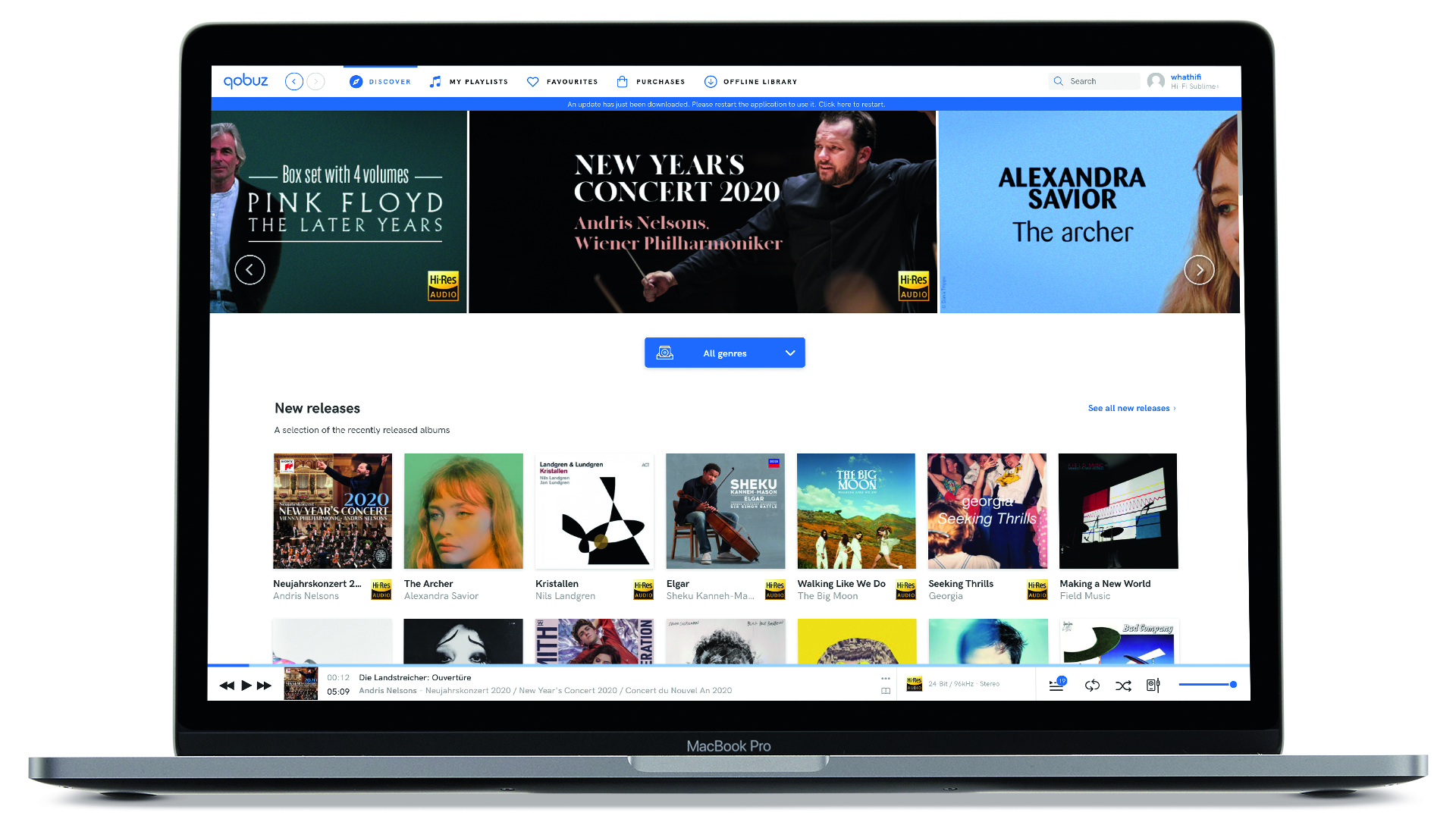
Qobuz's sound-first attitude has been clear from the very start. It was the first streaming giant to support hi-res, and also the first to drop MP3 streaming entirely, going all-in on CD quality and hi-res. In truth, taking a stand is nothing new to Qobuz, a company that tends to do things differently from most of its rivals in the music streaming world.
There are now just two packages from which users can choose: the Studio plan purely for CD-quality and hi-res streaming, and the Sublime plan which also throws in discounts of up to 60 per cent on purchases of hi-res 24-bit downloads.
The main sticking point for us at the beginning was the service’s high price and comparatively limited library, but the service's recent tier realignment and pricing, not to mention its work to bring its catalogue, user experience and device compatability in line with the competition, has seen it rise pretty significantly in value. It is still slightly more expensive than the others, but it does feel like a compelling rival to Tidal now – not least for those who would take advantage of the discounted downloads. The arrival of the long-awaited Qobuz Connect cast feature has only made it even more attractive.
It also offers authentic masters – tracks as supplied, with no alterations. And it has some editorial content, helping it stand apart from the rest.
It is a great-sounding service with a mature hi-res offering. Both Tidal and Qobuz offer free trials so, if you're torn between the two, you can try before you buy!
- Read our Qobuz review
Apple Music – for Apple device owners
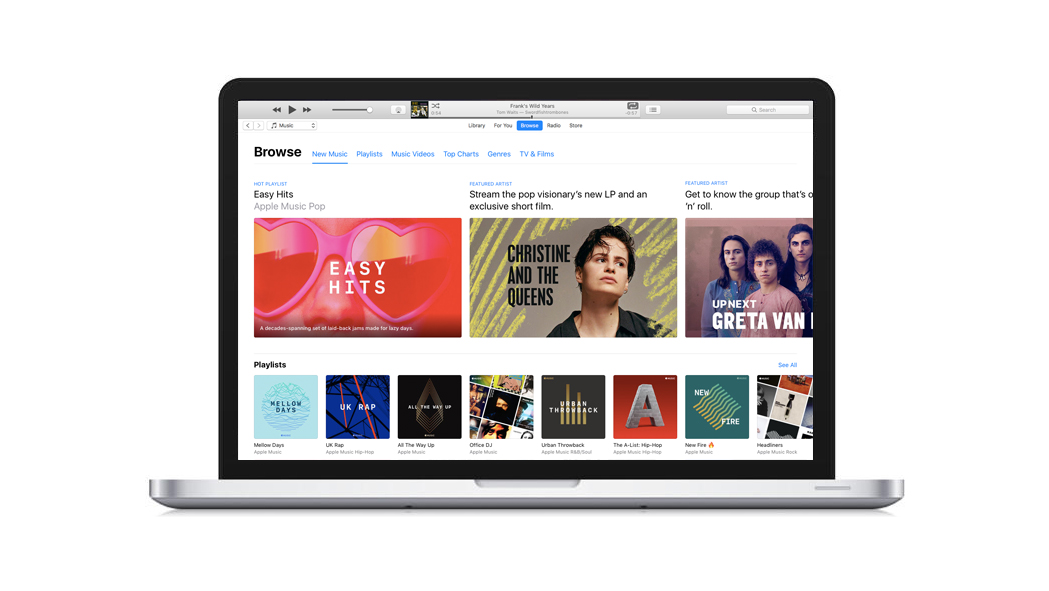
Apple offers CD-quality (16-bit/44.1kHz), Apple Music Lossless (24-bit/48kHz) and Hi-Res Lossless (up to 24-bit/192kHz) streams via its ALAC (Apple Lossless Audio Codec) codec. And the best bit? All of these streams are available under the standard subscription price. That puts it on a par with Amazon and Tidal. If you own an iPhone, the chances are pretty high that Apple Music is your service of choice – and its inclusive hi-res streaming only makes it harder to ignore.
Here's the rub, though: the AirPods Max are the only Apple headphones to support lossless, and then only Apple Music Lossless, not the full Hi-Res Lossless. And that's only in wired listening mode. (This feature arrived around the middle of 2025 via a firmware update.) If you're using a pair of in-ear AirPods, you're out of luck.
Apple's iPhones (since the iPhone 7) natively support lossless – but again, only Apple Music Lossless, not the highest quality Hi-Res Lossless. If you want to listen to Apple Music tracks above 24-bit/48kHz on your iPhone, you'll need to connect an external DAC and use a wired pair of headphones. Check out our guide for how to listen to hi-res audio on an iPhone. AirPlay 2 – the cast feature for Apple hardware and software – doesn't usefully support hi-res either.
Apple's HomePod range of smart speakers do support lossless – that's the brand new HomePod 2, the first-gen HomePod (2018) and current HomePod Mini. Again, it's worth noting that they only support Lossless up to 24-bit/48kHz – not Hi-Res Lossless. The same is true of the Apple TV and iPad families, which are listed as supporting Apple Lossless, with no mention of Hi-Res Lossless.
Like Amazon Music and Tidal, Apple Music also now has immersive 3D audio tracks – this time through Apple's proprietary Dolby Atmos-powered Spatial Audio format. These tracks will play on AirPods or Beats headphones with a W1 or H1 chip, as well as on HomePods and the iPhone 11 onwards and iPad Pro (but not iPad, iPad Mini or iPad Air). Playing from an Apple TV 4K into a Dolby Atmos soundbar or system will work too.
Apple Music is a no-brainer for iPhone and iPad users, albeit not the most recommendable service for Android users, despite there being an Android app.
- Read our Apple Music review
- Apple Music tips: how to listen offline, use Alexa, share your account and more
- Apple Music lossless: which devices will (and won't) play lossless and spatial
Music services that don't support hi-res
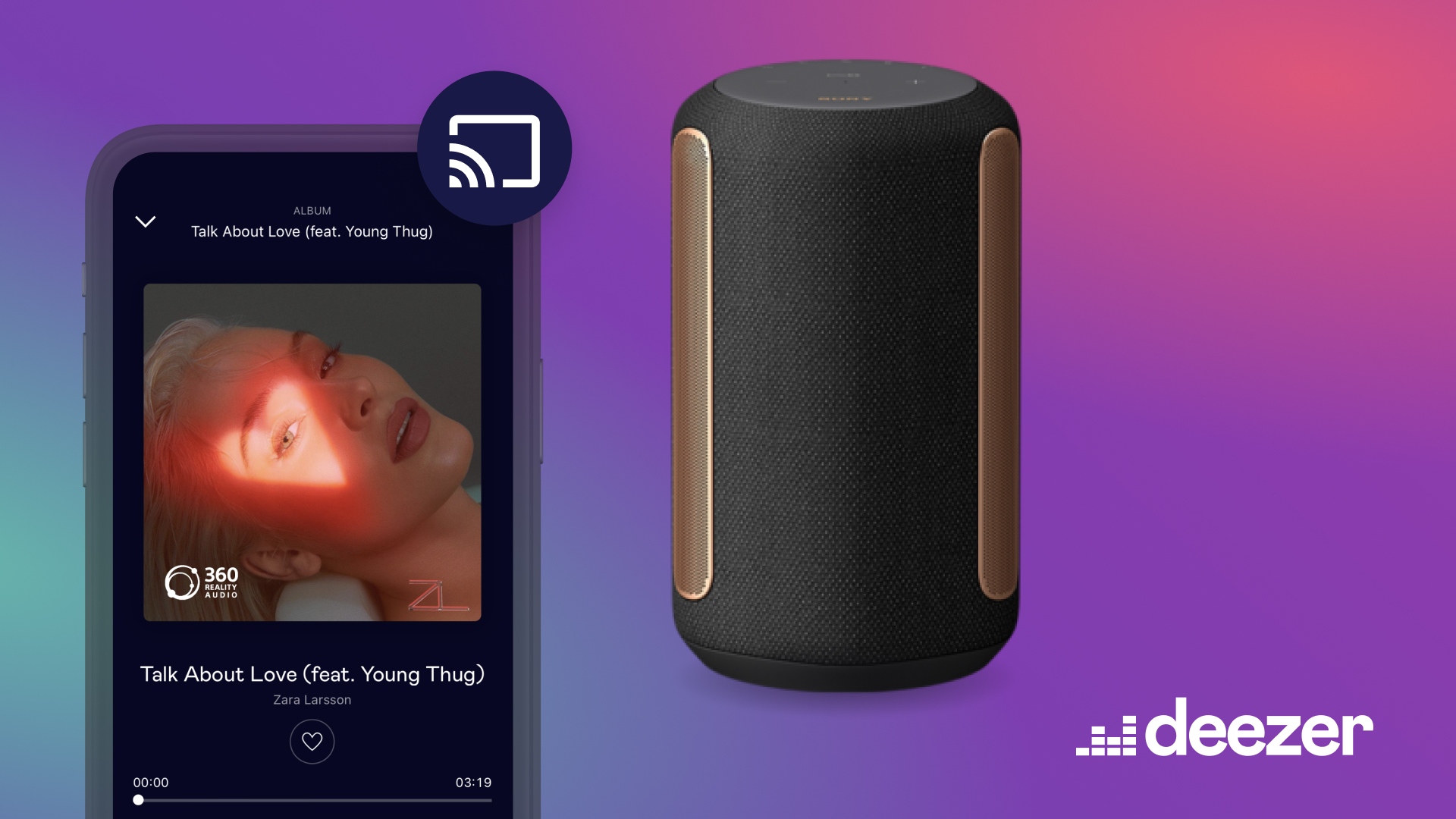
Another short answer: Deezer and YouTube Music are yet to offer (or even promise to offer) hi-res audio.
So will Deezer (which offers CD-quality) or YouTube Music (which maxes out at 256kbps) ever go hi-res? Alexander Holland, chief content and strategy officer at Deezer, offered some choice words on this in 2021: "Our goal is to make sure that Deezer brings value to both artists and music fans. We’re not ready to announce anything just yet but are considering the implications on our users, technology and business. It’s clear that our industry shifted overnight and HiFi is the new de facto standard for audio quality. We would never want to stand in the way of that. You’ll hear more from us soon."
But those considerations clearly haven't resulted in hi-res adoption in the past four or so years. There's nothing to report from YouTube on the hi-res matter either.
Verdict: which hi-res streaming service is best?
Ultimately, the delicate balance of budget and device compatibility within your home will determine which service you opt for.
Tidal is our current Award winner: the user experience is spot on, the catalogue is extensive, and the recent price lowering and introduction of Tidal Connect has helped its case even further.
Qobuz is a good shout for audiophiles now too, and uniquely offers Sublime subscribers heavily discounted downloads for those who like to stream and own digital music.
Amazon Music Unlimited has recently positioned itself as the joint-cheapest hi-res option (alongside Apple and Tidal), and the outright cheapest for Prime customers in the US and the UK, though its user experience is not quite up to scratch of its rivals in our minds.
Apple Music, however, is a no-brainer for owners of Apple devices who wish to enjoy hi-res streams, not least due to its competitive price, vast library and the added bonus of spatial audio. The downside, however, is that it isn't very hi-fi friendly (AirPlay doesn't support hi-res, after all) and you'll need a DAC to play maximum hi-res bitrates through your iPhone and wired headphones.
Spotify has finally joined the pack, and Lossless will be a welcome upgrade for existing customers on the Premium tier. It sounds good, supports a wide range of devices thanks to Spotify Connect and has plenty of features to play with. But for sound quality and price, it is beaten elsewhere.
The hi-res streaming service landscape is more compelling and comparable than it's ever been. While Tidal and Amazon have historically had the edge where sound quality is concerned, the playing field is considerably more levelled, with differences between the various services' deliveries often being on a track-per-track basis.
But each give audiences a reason to pick them, and which you decide on will be down to your kit, preference and, to some extent, monthly budget.
MORE:
Got the service? Now read how to choose the right speakers and get the best sound
Struggling to hear the difference? The problem with hi-res audio is how you might be listening to it
Want to own your own music? How to build your own digital music library







